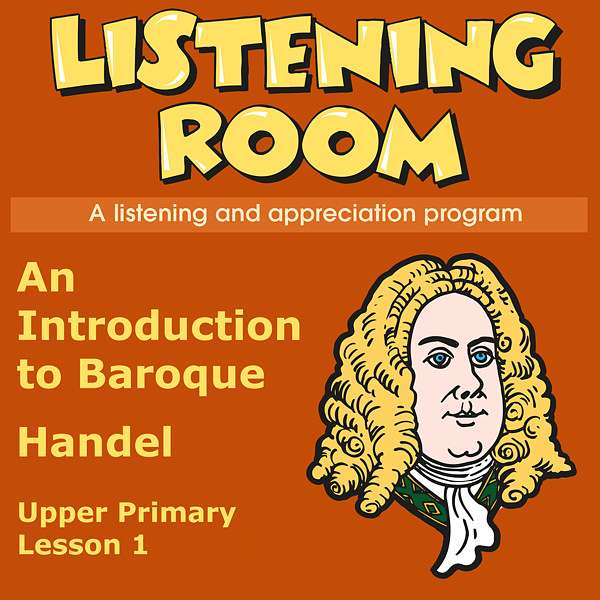
The Listening Room Podcast
The Listening Room Podcast
An Introduction to The Baroque - Handel - A Listening Room Podcast for Upper Primary Students
This episode is from Listening Room 3 published by Bushfire Press and presents two pieces of music by one of the leading composers of the Baroque era, George Frideric Handel. The Baroque era was from 1600 to 1750.
This lesson provides guided listening and movement activities with links to optional follow-up activities.
Perfect to help young people stay grounded and broaden their experience and appreciation of classical musicLinks to all support material including a page for children and guides and assessment materials for teachers can be found at www.thelisteningroom.net
ABOUT THE PIECES
The Arrival of the Queen of Sheba from the oratorio Solomon 1749).
George Frideric Handel
An oratorio is an opera without the dramatic content i.e. dialogue, costumes, sets, etc. and it is written to be performed in a concert hall rather than on a stage.
While Handel wrote 42 operas in the Italian style between 1705 and 1741, his English audiences became tired of them and he turned to writing oratorios.
The libretto (lyrics) of Solomon is from the biblical stories of wise King Solomon.
The Arrival of the Queen of Sheba is an instrumental piece, or sinfonia, and was scored for strings and two oboes.
The Hallelujah Chorus (from the oratorio The Messiah 1741).
George Frideric Handel
The text for this oratorio was from the King James Bible and from the Psalms in the Book of Common Prayer.
The Messiah was Handel’s 6th Oratorio and remains his most popular.
It has become a Christmas favourite.
Much of the vocal music of the baroque was religious or contained religious ideas, themes or texts. A scholarly and knowledgeable friend of Handel, Charles Jennes compiled or helped the composer prepare the text or libretti for many of his oratorios between 1735 and 1745.